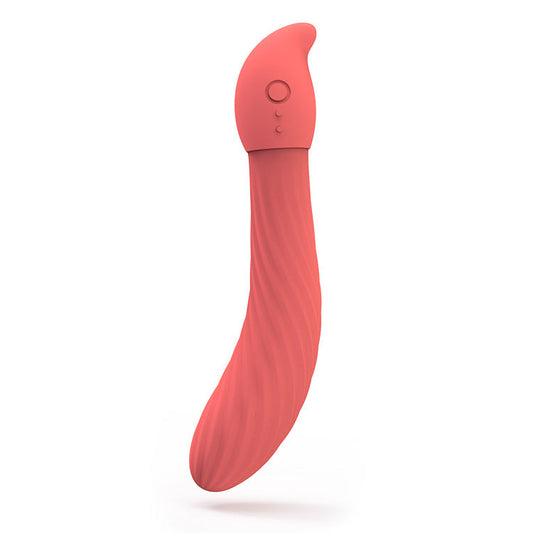
L'art et la science des préliminaires
Introduction : Pourquoi les préliminaires méritent leur propre attention
Imaginez : vous êtes à un rendez-vous torride. L'ambiance s'emballe vite, les vêtements tombent, et avant même de vous en rendre compte, c'est fini. Décevant ? C'est le moins qu'on puisse dire.
Pour beaucoup, faire l'amour sans préliminaires, c'est comme rater la bande-annonce et le concert. C'est comme ne rien entendre du rappel. Certes, ça compte, mais ça ne satisfait pas.
Les préliminaires ne sont pas une simple mise en bouche. Cette phase intense et excitante rend l'acte sexuel possible et agréable. En effet, la plupart des études suggèrent que sans préliminaires adéquats, de nombreuses femmes ont des difficultés à atteindre l'orgasme. Pourtant, c'est souvent la partie la plus négligée des rapports hétérosexuels.
Cet article explorera l'importance des préliminaires et expliquera ce qui se passe dans votre corps et votre cerveau.
Vous découvrirez comment cela contribue à combler l'écart d'orgasme. Nous partagerons également des conseils pratiques pour une expérience inoubliable. Considérez cela comme votre doctorat en préliminaires .
Les préliminaires et le corps : la science de l'excitation
Parlons un instant d'aspect biologique. Votre corps n'est pas un interrupteur ; il ressemble plutôt à un four à l'ancienne. Il a besoin de temps pour chauffer avant d'être prêt à cuire. Les préliminaires sont cette phase de préchauffage.
Voici ce qui se passe lorsque vous vous adonnez à des préliminaires de qualité :
- Flux sanguin : Les organes génitaux gonflent avec une circulation accrue, ce qui les rend plus sensibles.
- Lubrification : Le vagin s'auto-lubrifie, mais seulement après le début de l'excitation. Sauter les préliminaires entraîne souvent une sécheresse vaginale, ce qui peut rendre la pénétration inconfortable, voire douloureuse.
- Engorgement clitoridien : Le clitoris compte plus de 8 000 terminaisons nerveuses. Il gonfle et devient plus sensible, mais cela prend du temps.
- Libération hormonale : L’ocytocine et la dopamine augmentent lors de baisers, de caresses et de taquineries prolongés. Cela ne fait pas que stimuler l’excitation, mais crée également des liens émotionnels entre les partenaires.
Considérez les préliminaires comme l'accordage d'un instrument. Vous ne monteriez pas sur scène avec une guitare sans l'avoir accordée. Le public (et votre partenaire) méritent mieux que des notes fausses.
Voici le point essentiel : les études montrent qu’une femme a besoin en moyenne de 12 à 20 minutes de préliminaires . Ce temps lui permet d’être prête à l’orgasme, tant physiquement que mentalement. Douze minutes, ça ne paraît pas beaucoup, à moins d’opter pour la méthode expéditive des deux minutes.

Vibrateur à double extrémité pour stimulation de texture Conçu pour les amateurs de variété, ce vibromasseur baguette classique offre des vibrations puissantes et vibrantes pour une stimulation clitoridienne intense. Ce gode vibrant à double extrémité modernise sa structure traditionnelle en ajoutant une extrémité en spirale pour une exploration intime. Il allie parfaitement plaisir classique et fonctionnalités innovantes. Allumez votre désir : une vie sexuelle plus intense.
Les préliminaires et l'esprit : la psychologie de l'anticipation
Les préliminaires ne se limitent pas à toucher la peau ; il s'agit de stimuler le cerveau. Après tout, le cerveau est le plus grand organe sexuel.
Les recherches en psychologie montrent que l'anticipation est une forme de plaisir en soi . Pensez à l'excitation de déballer un cadeau ou d'attendre un message de la personne qui vous plaît. Les préliminaires créent ce délicieux suspense.
L’excitation n’est pas purement physique ; elle est profondément mentale :
- Sécurité et confort : De bons préliminaires signalent au cerveau que le corps est en sécurité, détendu et ouvert à l'intimité. Le stress et l'anxiété, en revanche, tuent l'orgasme.
- Intimité : Le contact visuel, les rires, les mots chuchotés et les taquineries enjouées font de la rencontre bien plus qu'une simple friction mécanique.
- Contrôle et jeu : la danse de qui touche qui, quand et combien de temps crée un jeu de pouvoir érotique qui accroît le désir.
Il existe également « l'effet d'investissement » . Lorsque les deux partenaires prennent le temps des préliminaires, le cerveau perçoit le rapport sexuel comme un moment important, et non précipité. Ce changement de perspective peut intensifier les orgasmes et accroître la satisfaction.
Alors si vous pensez que les préliminaires ne sont qu'une « mise en bouche », détrompez-vous, il s'agit aussi d'un jeu psychologique pour le système de récompense de votre cerveau.
Préliminaires vs. Rapport sexuel : qui vous procure vraiment du plaisir ?
Voici les chiffres. On parle souvent de rapports sexuels, mais les données révèlent une autre réalité. Pour beaucoup de femmes, les préliminaires sont en fait plus efficaces que la pénétration pour atteindre l'orgasme.
Tableau : Fréquence des orgasmes selon l'activité sexuelle
| Type d'activité | Fréquence des orgasmes (femmes) | Fréquence des orgasmes (hommes) | Source |
|---|---|---|---|
| Pénétration uniquement | 18–25 % | 90–95 % | PubMed |
| Pénétration + stimulation clitoridienne | 65–80 % | ~95% | PMC |
| préliminaires prolongés (oraux, manuels, avec jouets) | 70 à 80 % | 80 à 90 % | Ligne Santé |
Ce tableau met en évidence une chose de façon criante : la pénétration seule est surestimée. Certes, elle est efficace à tous les coups chez les hommes, mais chez les femmes, c’est souvent un pari risqué. En privilégiant les préliminaires, on observe une augmentation considérable du nombre d’orgasmes.
Il est temps d'arrêter de considérer les préliminaires comme une première partie. Pour beaucoup, ils en sont la tête d'affiche.
L'écart orgasmique : pourquoi les préliminaires sont un facteur d'égalité
L’« écart orgasmique » désigne la différence bien documentée de fréquence des orgasmes entre les hommes et les femmes lors de rapports hétérosexuels. Alors que les hommes atteignent l’orgasme presque systématiquement, ce n’est pas le cas des femmes.
Mais voici le rebondissement : dans les relations lesbiennes, cet écart disparaît quasiment. Pourquoi ? Parce que les préliminaires ne sont pas seulement inclus ; ils sont célébrés.
Les recherches montrent que :
- Les hommes hétérosexuels atteignent l'orgasme environ 95 % du temps .
- Les femmes hétérosexuelles ont un orgasme dans environ 65 % des cas .
- Les femmes lesbiennes ont un orgasme dans environ 86 % des cas .
Le secret ? Moins de pénétration, plus de sexe oral, de stimulation manuelle et de jouets, autrement dit, de préliminaires.
Ce n'est pas une question de biologie, c'est une question de méthodologie . Si les couples hétérosexuels s'inspiraient des pratiques lesbiennes et privilégiaient les préliminaires prolongés, l'écart d'orgasme se réduirait considérablement.
Mythes et réalités des préliminaires
Pendant que nous y sommes, brisons quelques mythes.
Mythe : Les préliminaires sont réservés aux femmes.
Réalité : Les hommes aussi en bénéficient. Les préliminaires améliorent les érections, prolongent l’excitation et rendent les orgasmes plus intenses.
Mythe : Le vrai sexe = pénétration.
Réalité : Le « vrai sexe », c'est tout ce qui vous fait jouir et vous procure une sensation agréable. Si les préliminaires suffisent, c'est du sexe. Point final.
Mythe : Si vous avez besoin de préliminaires, vous manquez d’attirance.
Réalité : Même le corps le plus excité a besoin d'une préparation physique. L'attirance ne remplace ni la circulation sanguine ni la lubrification.
Mythe : Les préliminaires sont ennuyeux ou répétitifs.
Réalité : si vos préliminaires semblent fades, c'est un problème de créativité, pas un problème de préliminaires.
Conseils pratiques : Transformer les préliminaires en jeu principal
Bon, assez de théorie. Voici comment améliorer vos préliminaires.
- Commencez tôt : Les préliminaires ne commencent pas au lit. Sextos, regards enjoués et allusions chuchotées pendant le dîner créent de la tension.
- Touchez partout : Le corps est une immense zone érogène. Embrassez les épaules, mordez les oreilles, caressez les cuisses, ne vous précipitez pas.
- Parler : Demandez-lui ce qui vous fait du bien. Ou osez : dites-lui exactement ce que vous voulez. La communication est aussi un préliminaire.
- Utilisez des jouets : vibromasseurs , baguettes , plumes, même des glaçons. Sortez des sentiers battus (et explorez aussi les possibilités offertes par ces derniers).
- Soyez ludiques : les préliminaires ne se résument pas à des gémissements sérieux. Riez, plaisantez, jouez des rôles. L’humour, c’est sexy.
- Prenez votre temps : l’important est de savourer . Si vous avez l’impression de prendre trop de temps, c’est probablement que vous êtes sur la bonne voie.
- Prolongez la sensualité après l'amour : les préliminaires ne s'arrêtent pas à l'orgasme. Câlins, caresses douces ou une deuxième fois, tout compte.
L'une des stratégies les plus efficaces ? Aller plus lentement que vous ne le pensez. Si votre partenaire en redemande, c'est que vous avez probablement trouvé le rythme idéal.
Conclusion : Faites des préliminaires le sujet principal
On a ri, on a cité PubMed, on a parlé du gonflement du clitoris, et voilà ce qu'il faut retenir : les préliminaires ne sont pas facultatifs . L'essence, l'étincelle et souvent l'orgasme lui-même sont présents.
Alors, cessez de le considérer comme un simple plat. Considérez-le plutôt comme un plat principal. Car en donnant la priorité aux préliminaires, tout le monde repart satisfait.











